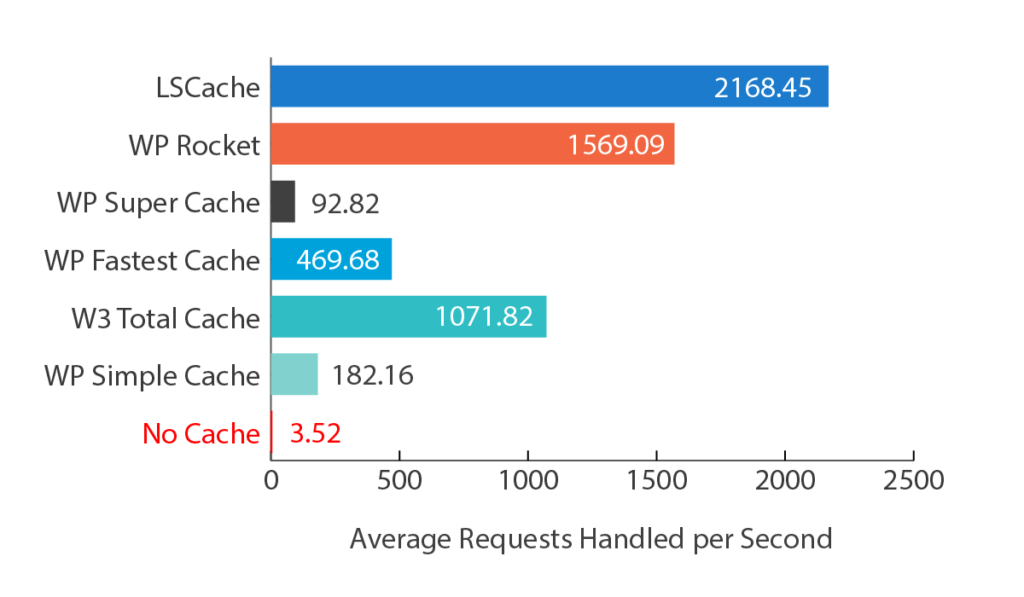ALL-IN-1 ACCELERATION
All-in-one acceleration solution
Litespeed cache is an open source WordPress plugin. It is made up of a free part that can be downloaded from wordpress.org, and a paid part, which Easy Green Hosting offers exclusively to all its customers.
The first, free for anyone, is LSCWP (LiteSpeed Cache for WordPress) which can be installed aspluginon your WordPress site.
Like any other cache optimization plugin, it creates an optimized copy of your website for faster recall from your browser.
The second part, which we offer exclusively and free of charge to our customers, isLSWS (LiteSpeed Web Server)which integrates with LSCWP to drastically reduce page loading times, thanks to advanced cache management tools, which interact with the server by allocating its resources intelligently.
With advanced cache management tools and optimization features, LSCWP is an all-in-one site acceleration solution. It's the only optimization plugin you need!

With LiteSpeed, your site can use best practices that ensure a high PageSpeed score and, more importantly, an exceptional user experience.
If you want to know the page speed of your site, do a test that.

To understand what page caching is, it might be easier if we cover an example of a site created with the WordPress content management system. The same general principle applies to any content management system, however.
When WordPress is first installed, it should work pretty quickly. Nobody uses a WordPress without add-ons, however. Usually you will use a custom theme and also add a number of plugins. Your site now looks great and, thanks to the various plugins, has all the functionality you need. However, As a result of all these extras, the site will inevitably load a little slower.
Why does this happen?
It happens in part because every time someone loads a page, all the PHP code in your theme and active plugins must be executed, in order to create the final output of the page. If you have a lot of plugins, or a poorly coded theme or plugin, this can cause significant overhead and result in a very slow site.
The idea of caching is that instead of doing all the heavy lifting every time a page loads and for every visitor, we only do it once when the page is accessed for the first time. We then store the code output and next time someone visits the page instead of rebuilding the entire page dynamically, instead, we simply generate the stored HTML code.
This makes things much faster, but there's a big problem that needs to be addressed: what happens when the content changes?
If we cache content, we need to know when the content changes. For example, if you change text on a page or product prices, you need to make sure that when visitors land on that page they get updated content rather than previously cached content.
To ensure this, the cached copy of the page must be “evicted” from the cache when the content changes. Once the specific content is ejected into the cache, the next time someone accesses that page, it will be dynamically generated again and then the new updated HTML output will be stored in the cache ready for the next visitor.
To handle this, applications like WordPress have numerous plugins that create cached content and eject any specific content when someone edits it via the WordPress admin area.
You should now have a good understanding of the general concept of a page cache. If you're a WordPress user, you may even have used one or several caching plugin solutions, but up until now these will likely all be application-level caches.
In most cases, if someone visits a WordPress site with a caching plugin implemented, PHP still needs to run. The code that tells the user to load the HTML into the cache is coded in PHP inside the caching plugin. You then need to have your WordPress 'core' PHP code executed and your caching plugin's PHP code execute and load the HTML from the cache. You have therefore saved a lot of overhead since you don't have to run the code of all the plugins you have installed, but you are still running some PHP code.
With server-side page caching, you don't need to run PHP. When a request for a page arrives in a server side page caching environment, if cached content exists, it is passed directly to the visitor without even invoking WordPress or a PHP execution.
But what about “evicting” the cache? How does the web server know that its content is up to date?
In the same way that an application level cache needs to purge pages from the cache when the content changes, so does the server side page cache. For this to work, you need to install a plugin or extension into the application itself that knows how to properly delete cached content from your server's side page cache. As with application page caches, the LiteSpeed server-side page cache can be cleared using a simple plugin, one designed specifically to work with LiteSpeed or one that is designed more generically to work with a page cache. Server-side pages (e.g. as paint). This is because LiteSpeed was designed to work just like other server side page caches and can have the cache purged upon receiving HTTP delete requests or, more simply, by deleting files in a hidden cache folder in your user account.
For WordPress, caching is just the beginning.
WordPress is by far the most popular CMS on the Internet today, powering over 35% of websites.
It's no surprise then that LiteSpeed spent a lot of time developing caching integration with WordPress.
They've gone well beyond the essential functions of page caching and cache eviction processing and have also integrated a myriad of other in-app optimization features, all designed to turbo charge WordPress websites.
Every conceivable feature you'd want in an optimization solution is there: merging CSS and Javascript, minifying code, lazy image loading, leveraging HTTP/2 Push Server support, deferring javascript, optimizing images, and so much more.
Once set up, your WordPress site will not only be fast due to caching, but super optimized in terms of internal code, supercharging site speeds and helping you achieve PageSpeed scores and boost your SEO.







